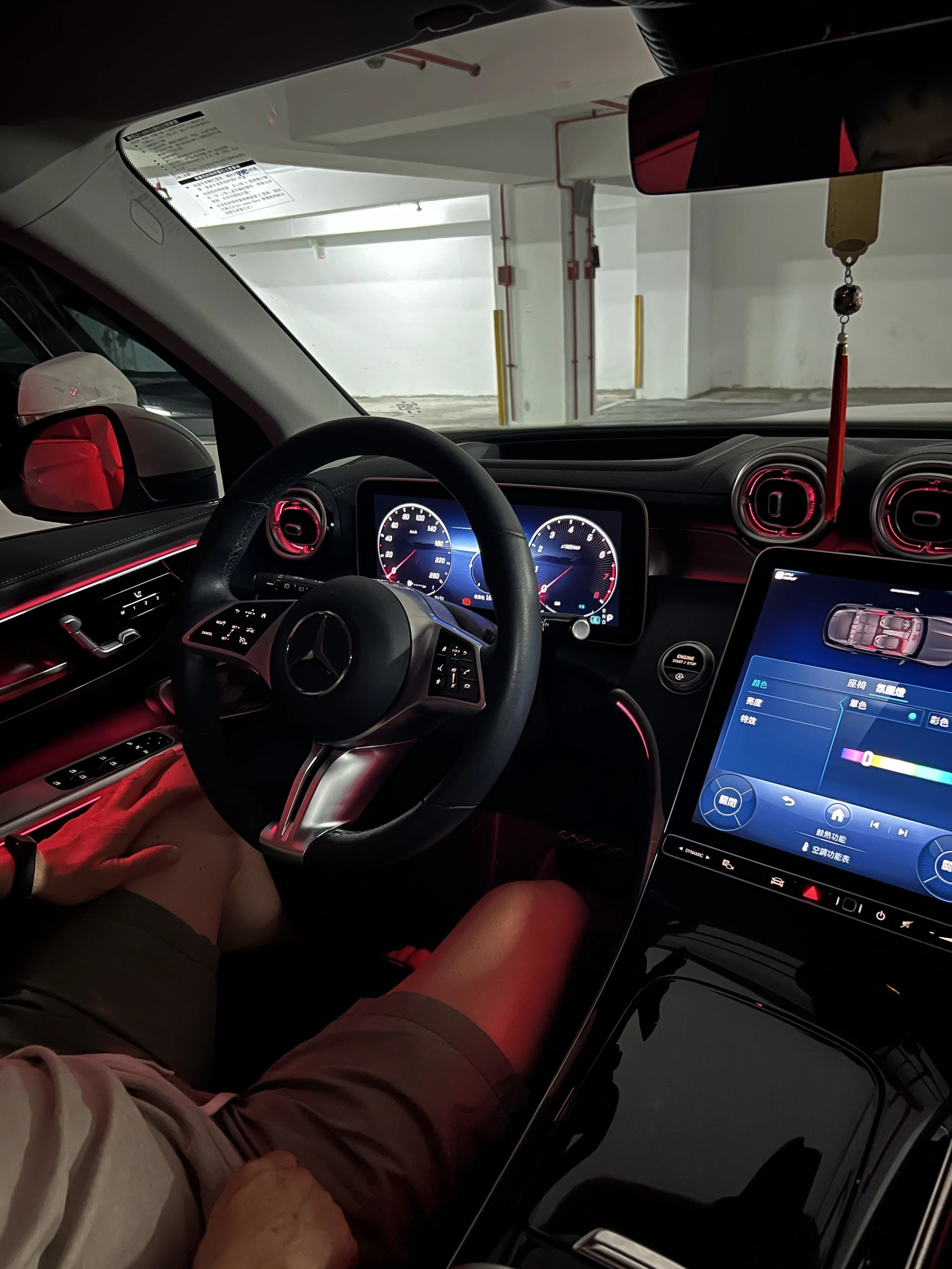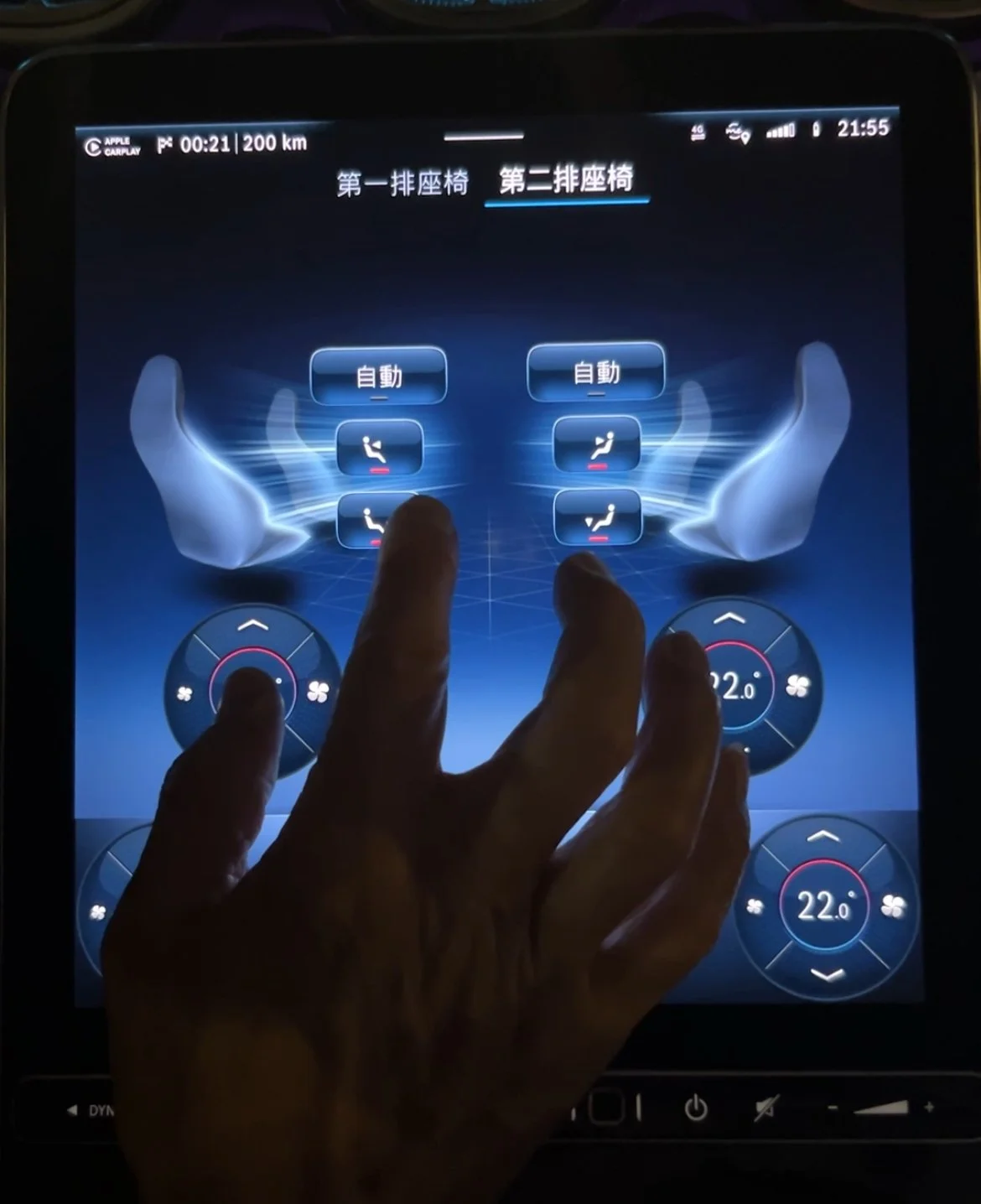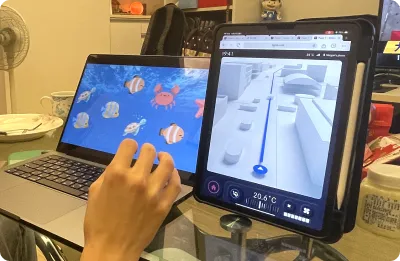Images are used for academic purposes in this project. If copyright infringement is identified, the images will be removed promptly
Background
This is the class project for the 2024 EMI User Experience Design course at the National Taiwan University of Science and Technology (Mar 2024 - Jun 2024).
My Role
My primary role in the project was as a User Researcher, responsible for conducting user interviews, defining user problems, and overseeing testing evaluations. Alongside my teammates, Morgan Hsu, Wendy Hsiao, and Annie Hu, all four of us collaborated closely in the decision-making process to ensure the project’s success.
Why This Topic?
We chose this topic due to the increasing complexity of automotive panel trends, which are anticipated to heighten driving distractions in the coming years. These distractions include cognitive, visual, and manual interruptions that can compromise safety. Our project aims to enhance driver focus by redesigning the car panel interface.
Why Mercedes Benz?
Mercedes Benz holds a leadership position in the automotive industry, renowned for its cutting-edge and luxurious interiors that consistently set industry standards. Our project explores potential improvements in Mercedes Benz vehicles to enhance driver focus and minimize distractions, thereby aspiring to set new industry benchmarks.
User Research
Related Research Papers
Before engaging with users, we reviewed related research papers to better understand the factors contributing to driver distractions. This analysis led us to identify three primary factors: cognitive, visual, and manual interruptions. These insights helped us structure the key aspects of our user research. Here are some references: [ref1] [ref2] [ref3]
Interview
We began by collecting feedback from 10 drivers of various car brands through interviews. This helped us identify the most common issues and needs experienced by drivers.
Empathy Maps
User Journey
User Research Tips
Since our interface is a car panel, it’s important to observe users’ behaviors while driving and gather their thoughts through interviews. By analyzing and comparing both, we can uncover valuable insights.
User Insights
1. Disconnect Between Vehicle System Design and User Needs Leads to Prolonged Operation Time
2. Complex Function Paths Lead to Driver Confusion
3. Insufficient Interaction Between the Panel and Users Leads to Drivers’ Uncertainty About Their Actions
How can we streamline the user interface of the in-vehicle system to enhance driving focus and efficiency?
Conduct interviews with participants while the car is stationary
Observe how they use the panel
Design Strategy
Key Features
1. Customization: Customized layout allows drivers to quickly find the functions they use the most commonly used functions
2. Limit-used Focus mode: Raising the threshold for using other functions has prevented the driving operation panel
3. Multi-Sensory Interaction: Increased multi-sensory feedback allows drivers to reduce visual distraction
Standard Mode Demo: Users can customize their home page by selecting their preferred applications. Additionally, we offer two layout options for them to choose from.
Focus Mode Demo: When a call comes in, the system switches to focus mode. Users can return to the home page by clicking the home button.
Evaluation
From the outset, we have implemented rapid evaluation cycles, beginning with concept validation and progressing through to the final design assessment. Each phase of testing is crucial for iterating our design to effectively address user needs.
Ideally, our tests would take place in actual driving conditions or using a driving simulator to closely observe user interactions with the panel. However, due to resource limitations and technical constraints, we adapted by utilizing two screens: one displaying either a real driving video or the interactive focus game, and the other simulating the car panel interface. This setup allowed us to mimic driving scenarios and gather valuable insights into user behavior under simulated conditions.
Test Setup
Redesigned Standard Mode Needs Further Improvement; Focus Mode Excels with High Usability
Standard Mode_SUS Score: 54.5
Despite Mixed Feedback on Homepage, Our Personalized Standard Mode Enhances Usability by Efficiently Catering to Diverse User Preferences.
From real users feedback:
”I feel the homepage looks a bit cluttered, and I can’t immediately tell where to click”
”Based on my preferences, I can quickly identify what I need at a glance, allowing me to achieve my goals more efficiently”Focus Mode_SUS Score: 86.5
Focus Mode Streamlines Call Handling with Fewer Steps, Proving Its Value by Allowing Drivers to Maintain Greater Focus on the Road
From real users feedback:
”I control everything with voice commands and avoid distractions from unimportant calls”
”By restricting some features, I can focus more on driving without getting distracted by other tasks”
Reflection
This project has been the most challenging of all my previous ones. From defining the problem to devising design solutions, we faced constant difficulties due to our limited expertise in car design. However, it has also been the most rewarding. Through this experience, I learned two key lessons:
Designing a car system requires more than just focusing on the interface. It demands a deeper understanding of drivers’ attention across different driving conditions. This means considering multi-modal sensory inputs to help drivers maintain focus safely.
When validating design concepts like Focus Mode, it is more practical to test specific scenarios. For example, we focused on calling scenarios to evaluate how Focus Mode performed in a real-world context.
I am grateful for my teammates, who brought diverse expertise to the project:
Morgan Hsu, Industrial Design major at the National Taiwan University of Science and Technology.
Wendy Hsiao, Commercial Design major at the National Taiwan University of Science and Technology.
Annie Hu, Bio-Industry Communication and Development major from National Taiwan University.








